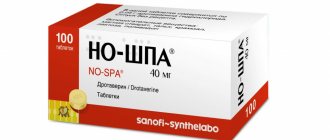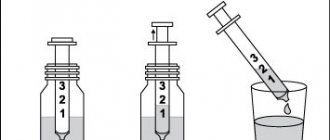pharmachologic effect
Hemostatic agent. It also has angioprotective and proaggregant effects. Stimulates the formation of platelets and their release from the bone marrow. The hemostatic effect, caused by the activation of thromboplastin formation at the site of damage to small vessels and the decrease in the formation of prostacyclin PgI2 in the vascular endothelium, promotes increased adhesion and aggregation of platelets, which ultimately leads to stopping or reducing bleeding. Increases the rate of formation of the primary thrombus and enhances its retraction, has virtually no effect on the concentration of fibrinogen and prothrombin time. Doses of more than 2 - 10 mg/kg do not lead to a greater effect. With repeated administrations, thrombus formation increases. Possessing antihyaluronidase activity and stabilizing ascorbic acid, it prevents the destruction and promotes the formation of mucopolysaccharides with high molecular weight in the capillary wall, increases the resistance of capillaries, reduces their fragility, and normalizes permeability in pathological processes. Reduces fluid leakage and diapedesis of blood cells from the vascular bed, improves microcirculation. Does not have a vasoconstrictor effect. Restores pathologically altered bleeding time. It does not affect the normal parameters of the hemostatic system. The hemostatic effect with intravenous administration of etamsylate occurs after 5 - 15 minutes, the maximum effect appears after 1 - 2 hours. The effect lasts for 4 - 6 hours, then gradually weakens over 24 hours; When administered intramuscularly, the effect occurs within 30-60 minutes.
Pharmacokinetics
The drug is well absorbed when administered intramuscularly and weakly binds to plasma proteins and blood cells. Therapeutic concentration in the blood is 0.05 - 0.02 mg/ml. Etamsylate is evenly distributed in various organs and tissues (depending on the degree of their blood supply).
The drug is excreted from the body mainly by the kidneys (unchanged), in small quantities with bile. The half-life of the drug after intravenous administration is 1.9 hours, after intramuscular administration - 2.1 hours. 5 minutes after intravenous administration, 20–30% of the administered drug is excreted by the kidneys, and completely after 4 hours.
Indications for use
Prevention and control of bleeding: parenchymal and capillary bleeding (including traumatic, in surgery during operations on highly vascularized organs and tissues, during surgical interventions in dental, urological, ophthalmological, otolaryngological practice, intestinal, renal, pulmonary bleeding, metro- and menorrhagia with fibroids, etc.), secondary bleeding against the background of thrombocytopenia and thrombocytopathy, hypocoagulation, hematuria, intracranial hemorrhage (including in newborns and premature infants), nosebleeds against the background of arterial hypertension, bleeding caused by taking medications, hemorrhagic diathesis (in including Werlhof disease, von Willebrand-Jurgens disease, thrombocytopathy), diabetic microangiopathy (hemorrhagic diabetic retinopathy, repeated retinal hemorrhage, hemophthalmos).
Contraindications
Hypersensitivity to any ingredient of the drug, acute porphyria, hemoblastosis in children, thrombosis, thromboembolism.
Carefully
In case of bleeding due to an overdose of anticoagulants, pregnancy.
Use during pregnancy and lactation
The safety of Etamzilate during pregnancy has not been established. Etamsylate should be used during pregnancy only if the potential benefit to the mother outweighs the possible risk to the fetus. During the mother's treatment, breastfeeding should be stopped.
Etamsylate injections during pregnancy: what are they prescribed for?
The medication is used both for the purpose of timely warning and emergency stop of uterine bleeding. In addition, the drug can be prescribed for other bleeding of external or internal localizations, for example, intestinal, rectal or nasal blood loss.
Etamzilat injections during pregnancy are prescribed for various complications that precede bleeding, namely:
- extraplacental hematoma;
- abruption of the ovum/placenta;
- hydatidiform mole;
- endometriosis;
- progesterone deficiency;
- miscarriage at all stages.
Etamsylate tablets are less effective during pregnancy than injections. However, in some cases they are recommended for use. An obstetrician-gynecologist may prescribe Etamzilat tablets if a pregnant woman has hypertension with constant nosebleeds, hypocoagulation, or thrombocytopenia.
On a note! Etamsylate injections are always a priority when a pregnant woman has open uterine bleeding. Intramuscular administration of the drug allows you to stop blood loss in a matter of minutes.
special instructions
Caution is required in patients who have ever experienced thrombosis or thromboembolism. The drug is ineffective in patients with a low platelet count. For hemorrhagic complications associated with an overdose of anticoagulants, it is recommended to use specific antidotes. The use of Etamzilat in patients with impaired blood coagulation system parameters is possible, but it should be supplemented by the administration of drugs that eliminate the identified deficiency or defect of coagulation system factors.
During the treatment period, care must be taken when driving vehicles and engaging in other potentially hazardous activities that require increased concentration and speed of psychomotor reactions.
Etamsylate: contraindications and adverse reactions
Etamsylate is prohibited for use during the gestational period under the following conditions:
- intolerance to etamsylate or other components of the medication;
- bronchial asthma;
- thrombosis;
- hemorrhages;
- osteosarcoma;
- acute porphyria;
- hypotension;
- increased blood clotting.
Due to the systemic effect of Etamzilate components on the female body, adverse reactions are possible during treatment:
- Headache attacks.
- Spontaneous dizziness.
- Hypertension.
- Vomit.
- Tides.
- Heartburn and abdominal pain.
- Diarrhea.
- Skin rash.
- Bronchospasm.
- Violation of the blood formula.
- Angioedema.
- Redness and swelling of the skin.
Important! The use of hemostatic drugs in parallel with Etamsylate is strictly prohibited.
Directions for use and doses
Intravenous, intramuscular, in ophthalmology - subconjunctival and retrobulbar.
Etamsylate can be administered intravenously in a 5% glucose solution or in an isotonic sodium chloride solution.
Adults: for prophylactic purposes during surgical interventions, the drug is administered intravenously or intramuscularly 1 hour before surgery at a dose of 0.25 - 0.5 g (2 - 4 ml of a 125 mg/ml solution), if necessary during surgery intravenously - at a dose of 0 .25 - 0.5 g (2 - 4 ml of 125 mg/ml solution), if there is a risk of postoperative bleeding intravenously or intramuscularly - 0.5 - 0.75 g (4 - 6 ml of 125 mg/ml solution) evenly throughout the day .
Children: if necessary, during surgery it is administered intravenously at the rate of 8 - 10 mg/kg body weight.
To stop bleeding, 0.25 - 0.5 g (2 - 4 ml of a 125 mg/ml solution) is administered intravenously or intramuscularly, then every 4 - 6 hours, 0.25 g (2 ml of a 125 mg/ml solution) for 5 - 10 days.
In the treatment of metro- and menorrhagia, the drug is prescribed in a single dose of 0.25 g (2 ml of a 125 mg/ml solution) intravenously or intramuscularly every 6 to 8 hours for 5 to 10 days.
For diabetic microangiopathy, the drug is administered intramuscularly in a single dose of 0.25 - 0.5 g three times a day for 10 - 14 days.
In ophthalmology, the drug is administered subconjunctivally or retrobulbarly at a dose of 0.125 g (1 ml of a 125 mg/ml solution).
The injection solution can be used topically (a sterile swab is soaked and applied to the wound.
Etamsylate 125 mg/ml 2 ml 10 pcs. injection
pharmachologic effect
Hemostatic agent.
Composition and release form Etamzilat 125 mg/ml 2 ml 10 pcs. injection
Solution - 1 ml:
- Active ingredient: etamsylate - 125.0 mg;
- Excipients: sodium disulfite - 2.5 mg, sodium sulfite - 1.0 mg, disodium edetate - 0.5 mg, water for injection - up to 1.0 ml.
Solution for injection, 125 mg/ml.
2 ml in ampoules of colorless neutral glass type I with a colored dot and a notch. An additional color ring can be applied to the ampoules.
5 ampoules per blister pack made of polyvinyl chloride film.
1 or 2 blister packs together with instructions for use are placed in a cardboard package (pack).
Description of the dosage form
Transparent, colorless or slightly yellowish liquid.
Directions for use and doses
Intravenous, intramuscular, subconjunctival and retrobulbar.
Etamsylate can be administered intravenously in a 5% glucose solution or in an isotonic sodium chloride solution.
The optimal daily dose of ethamsylate for adults is 10-20 mg/kg body weight per day, divided into 3-4 doses, as an intramuscular or slow intravenous injection.
If ethamsylate is mixed with saline, it should be used immediately.
Adults: during surgical interventions, 250-500 mg is administered intravenously or intramuscularly 1 hour before surgery; during surgery, 250-500 mg is administered intravenously; if necessary, this dose can be repeated again. After surgery, 250-500 mg is administered every 6 hours until the risk of bleeding disappears.
Children: daily dose is 10-15 mg/kg body weight, divided into 3-4 doses.
In neonatology: etamsylate is administered intramuscularly or intravenously at a dosage of 12.5 mg per kg of body weight (0.1 ml = 12.5 mg). Treatment should begin within the first 2 hours after birth.
When treating metromenorrhagia, the drug is prescribed in a single dose of 250 mg (2 ml of 12.5% solution) intravenously or intramuscularly every 6-8 hours for 5-10 days.
For diabetic microangiopathy, the drug is administered intramuscularly for 10-14 days in a single dose of 250-500 mg three times a day or subconjunctivally/retrobulbarly in a dose of 125 mg.
Pharmacodynamics
The drug increases the formation of high molecular weight mucopolysaccharides in the walls of capillaries and increases the stability of capillaries, normalizes their permeability during pathological processes, improves microcirculation; has a hemostatic effect.
The hemostatic effect is due to the activation of thromboplastin formation at the site of damage to small vessels.
The drug stimulates the formation of blood coagulation factor III and normalizes platelet adhesion.
The drug does not affect the level of fibrinogen and prothrombin time, does not have hypercoagulable properties and does not contribute to the formation of thrombi (blood clots).
Pharmacokinetics
After intravenous administration, etamsylate begins to act within 5-15 minutes.
Maximum effect 1 hour after dosing. The effect of the drug lasts for 4-6 hours. After administration of 500 mg, the maximum plasma concentration is reached after 10 minutes (50 μg/ml).
The plasma half-life after intravenous administration is approximately 2 hours. Etamsylate is evenly distributed in various organs and tissues (depending on the degree of their blood supply).
The drug is well absorbed when administered intramuscularly and weakly binds to plasma proteins and blood cells.
When administered intramuscularly, the hemostatic effect occurs within 30-60 minutes.
The half-life from blood plasma after intramuscular administration is 2.1 hours.
Almost completely penetrates the placental barrier. It is unknown whether ethamsylate passes into breast milk.
About 72% of the administered dose is excreted unchanged through the kidneys during the first 24 hours.
Indications for use Etamzilat 125 mg/ml 2 ml 10 pcs. injection
Prevention and treatment of capillary bleeding of various etiologies:
- during and after surgical interventions on all well-vascularized tissues in dental, otorhinolaryngological, gynecological, urological, ophthalmological practice, obstetrics and plastic surgery;
- hematuria, metrorrhagia, primary menorrhagia, menorrhagia in women with intrauterine contraceptives, nosebleeds, bleeding gums;
- diabetic microangiopathy (hemorrhagic diabetic retinopathy, repeated retinal hemorrhage, hemophthalmos);
- intracranial hemorrhages in newborns and premature infants.
Contraindications
- Hypersensitivity to etamsylate or any of the components of the drug;
- acute porphyria;
- hemoblastosis in children (lymphoblastic and myeloblastic leukemia);
- thromboembolism, thrombosis;
- breastfeeding period.
Carefully:
History of thrombosis, thromboembolism; tendency to arterial hypotension and unstable blood pressure; bleeding due to an overdose of anticoagulants; pregnancy; impaired liver and kidney function (no experience of clinical use).
Application Etamzilat 125 mg/ml 2 ml 10 pcs. solution for injection during pregnancy and lactation
In animal studies, the teratogenic effect of ethamsylate was not revealed. In clinical studies, no fetotoxic effect of ethamsylate was observed. Etamsylate penetrates the placental barrier and is found in low concentrations in maternal and umbilical cord blood. However, given the insufficient clinical experience, the use of etamsylate during pregnancy is only possible if the expected benefit to the mother outweighs the potential risk to the fetus.
There are no data on the penetration of ethamsylate into breast milk. When prescribing the drug during lactation, breastfeeding should be stopped.
special instructions
For use in medical institutions only.
Before starting treatment, other causes of bleeding should be excluded.
If the solution becomes colored, it should not be used.
Caution is required in patients who have ever experienced thrombosis or thromboembolism.
Due to the increased risk of arterial hypotension (a pronounced decrease in blood pressure), when using the drug parenterally, caution should be exercised in patients with unstable blood pressure or a tendency to arterial hypotension.
Clinical studies of the use of etamsylate preparations in patients with impaired liver and kidney function have not been conducted, so caution should be exercised when using etamsylate in this category of patients. Since etamsylate is excreted by the kidneys, it is necessary to reduce the dose of etamsylate in patients with renal failure.
For hemorrhagic complications associated with an overdose of anticoagulants, it is recommended to use specific antidotes.
The use of etamsylate in patients with impaired blood coagulation parameters is possible, but it must be supplemented by the administration of drugs that eliminate the identified deficiency or defect of coagulation factors.
The drug contains sodium sulfite, which can cause allergic reactions, nausea, and diarrhea in patients with hypersensitivity to it.
Allergic reactions can be severe and include anaphylactic shock and/or life-threatening asthma attacks. The frequency of occurrence is unknown, but this pathological reaction is observed more often in patients with bronchial asthma. If such an allergic reaction occurs, use of the drug Etamzilat should be stopped immediately.
If skin reactions or fever occur, treatment should be stopped and you should consult a doctor, because may be a manifestation of a hypersensitivity reaction.
In therapeutic doses, ethamsylate can underestimate the concentration of creatinine in the blood when determined by the enzymatic method; in this case, it is recommended to use the classic Popper method, because etamsylate does not affect the results of determining creatinine concentration by this method.
Impact on the ability to drive vehicles and operate machinery
Etamsylate does not affect the ability to drive a car and other operating mechanisms that require increased concentration and speed of psychomotor reactions.
Overdose
No cases of ethamsylate overdose have been reported to date.
Side effects Etamzilat 125 mg/ml 2 ml 10 pcs. injection
According to the World Health Organization, adverse reactions are classified according to their frequency of development as follows: often (>1/100, 1/1000, 1/10000,
Gastrointestinal disorders: often - nausea, heartburn, heaviness in the epigastric region.
Disorders of the skin and subcutaneous tissues: often - skin rash; frequency unknown - facial skin flushing.
Nervous system disorders: often - headache; frequency unknown - dizziness, paresthesia of the lower extremities.
Vascular disorders: very rarely - thromboembolism, marked decrease in blood pressure.
Disorders of the blood and lymphatic system: very rarely - agranulocytosis, neutropenia. thrombocytopenia.
Musculoskeletal and connective tissue disorders: rarely - arthralgia.
Immune system disorders: very rarely - allergic reactions.
Other: often - asthenia; very rarely - fever.
The drug contains sodium sulfite, which in rare cases can cause severe hypersensitivity reactions (including anaphylactic shock) and bronchospasm.
Drug interactions
Etamsylate is pharmaceutically incompatible (in the same syringe) with other drugs.
Ethamsylate solution is incompatible with sodium bicarbonate injection and sodium lactate solution.
Administration of the drug at a dose of 10 mg/kg body weight 1 hour before the administration of dextran solutions with an average molecular weight of 30,000-40,000 prevents the antiplatelet effect of the latter; administration of ethamsylate after dextran solutions does not have a hemostatic effect. A combination of ethamsylate with aminocaproic acid and menadione sodium bisulfite is possible.
Thiamine (vitamin B1) is inactivated by sodium sulfite, which is part of the drug Etamzilat.


